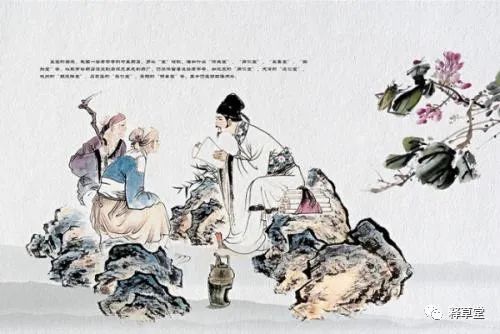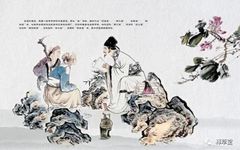How does Traditional Chinese Medicine (TCM) use auditory diagnosis to treat illness? TCM is a unique method of treating diseases that has developed over a long history, accumulating extensive experience in treating various ailments, which can be said to have very effective results. Now, let’s explore how TCM employs auditory diagnosis to treat illnesses.

Sound Normal sounds are natural, harmonious in tone, and clearly articulated. Abnormal sounds include: hoarseness, which encompasses both huskiness and loss of voice; huskiness is characterized by a dry throat and difficulty in phonation, while loss of voice means complete inability to speak. These conditions often arise from external pathogens of wind-cold or wind-heat, or from the intersection of cold and heat injuring the lungs. Snoring, especially when in a stupor, is often due to confusion of consciousness and obstruction of the airway, commonly seen in cases of heat entering the pericardium or stroke affecting the organs. Moaning occurs when there is pain or fullness in the body, producing sounds of discomfort, often associated with headaches, chest pain, abdominal pain, or toothache. Sneezing is caused by the upward surge of lung qi, commonly seen with external wind-cold. If sneezing occurs suddenly after a prolonged illness, it may indicate recovery.Language The heart governs the spirit; thus, heart disease can lead to disordered speech. Speech difficulties include: speaking in a hesitant, unclear, slow manner, or failing to convey meaning, often seen in post-stroke sequelae or late-stage febrile diseases. Delirium, characterized by confusion and incoherent speech, is often due to excess conditions. Repetitive speech, where the individual is unclear and speaks in a low, weak voice, is often indicative of deficiency conditions. Talking to oneself or mumbling is commonly seen in acute febrile diseases or in elderly patients with chronic illness leading to heart blood deficiency. Miscommunication, where the patient speaks in a disordered manner and is aware of their mistakes but cannot control it, is often due to insufficient heart qi. Raving, characterized by hoarse, rapid speech, high volume, and abusive language, is often seen in phlegm-heat disturbing the heart.Breathing Breathing is related to the lungs, kidneys, and other organs; changes in breathing can indicate the condition of the internal organs. Wheezing is characterized by difficulty in breathing, shortness of breath, and in severe cases, inability to lie flat. Wheezing can be classified as excess or deficiency. Excess wheezing occurs suddenly, generally in robust individuals with a strong pulse, often due to lung heat or phlegm retention. Deficiency wheezing develops slowly, with shallow inhalation and prolonged exhalation, typically in individuals with a weak constitution and a weak pulse, indicating lung and kidney deficiency. Asthma is characterized by rapid breathing accompanied by wheezing, with a sound resembling a whistle, often recurring due to phlegm retention and external wind-cold. Prolonged exposure to cold and damp environments or excessive consumption of sour, salty, or cold foods can also trigger asthma. Clinically, asthma and wheezing often occur simultaneously. Shortness of breath, characterized by rapid and shallow breathing, may indicate excess conditions if accompanied by thirst and joint pain; if accompanied by weakness and difficulty urinating, it indicates deficiency. Coughing is closely related to the lungs. A heavy, turbid cough with clear phlegm and nasal congestion is often due to external wind-cold. A cough with phlegm is easily expectorated, often indicating cold cough due to phlegm dampness obstructing the lungs. A cough that sounds like a dog barking, accompanied by hoarseness, is often indicative of diphtheria. Paroxysmal cough, characterized by continuous coughing, may lead to coughing up blood, known as whooping cough.Vomiting Vomiting is the expulsion of food, phlegm, or liquid from the stomach. Weak vomiting with a slow expulsion of clear phlegm and water indicates deficiency or cold conditions. Loud vomiting with sticky yellow phlegm or sour and bitter contents indicates excess conditions. Sour and rotten vomiting often results from overeating, especially rich and fatty foods, leading to food stagnation in the stomach.Borborygmi Borborygmi refers to sounds in the abdomen. The sound can help identify the location and nature of the illness. Borborygmi in the stomach resembles water sloshing in a bag, producing sound when pressed while walking, indicating phlegm and fluid obstruction. Borborygmi in the abdomen may decrease with warmth and food but worsen with cold or hunger, often due to prolonged illness or excessive consumption of cold foods, indicating disharmony in the stomach and intestines. This concludes the introduction to auditory diagnosis in TCM for treating diseases. In addition to auditory diagnosis, many other methods of TCM diagnosis and treatment have been detailed. From the above introduction, we can understand that TCM offers a more diagnostic approach to treating diseases, with individualized treatment plans that are more thorough.

